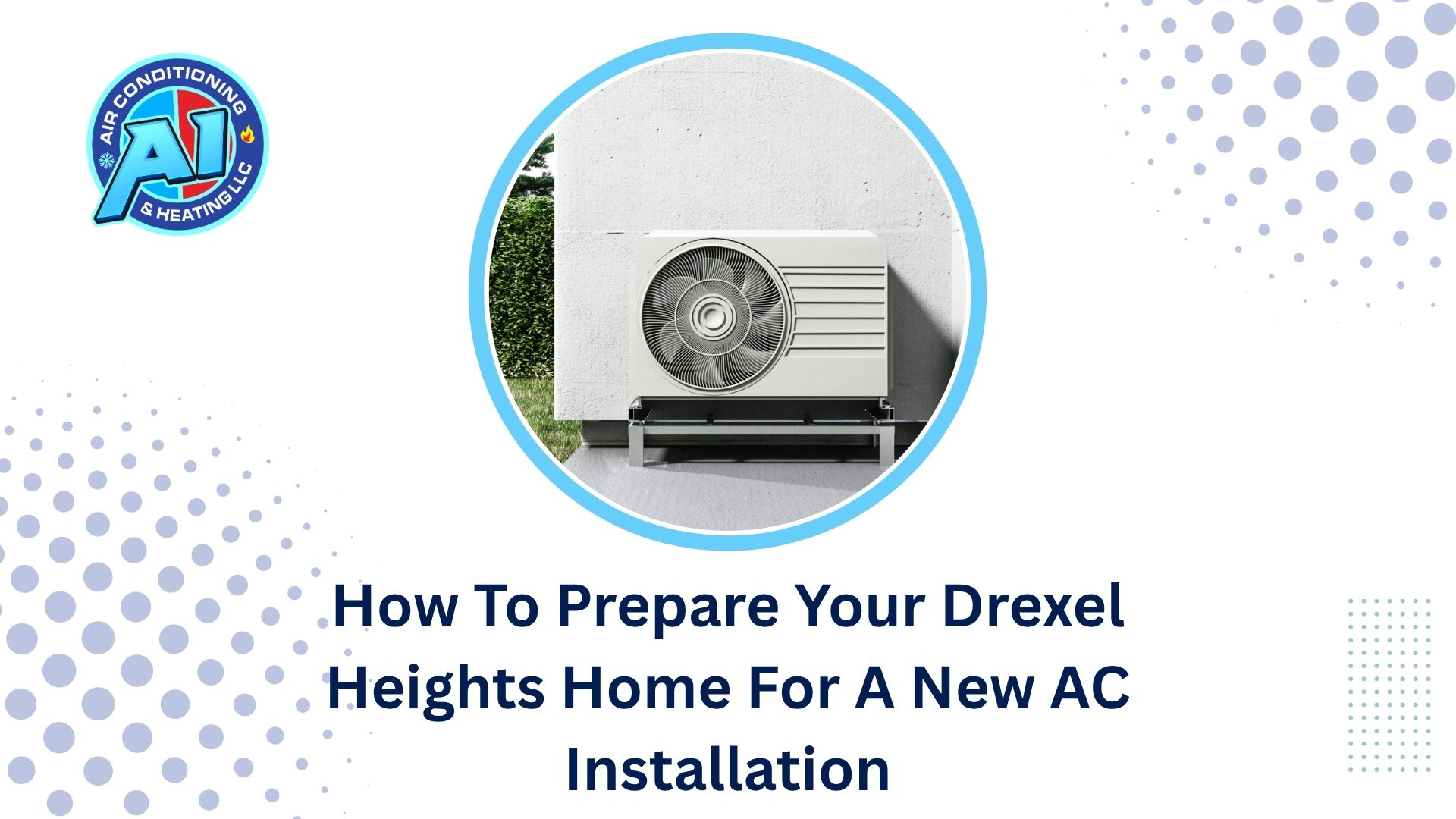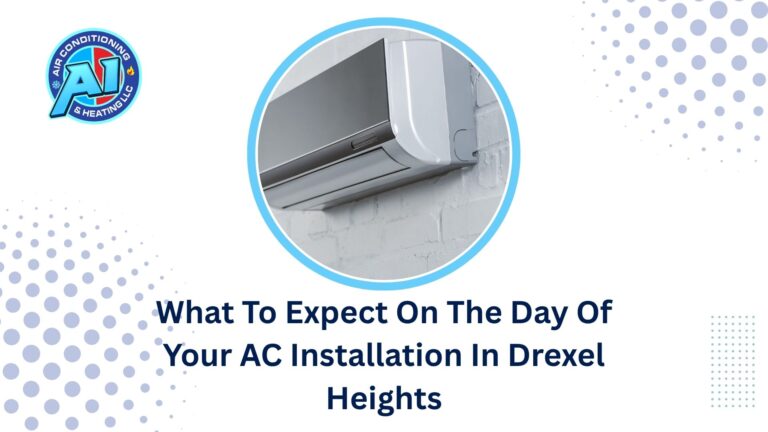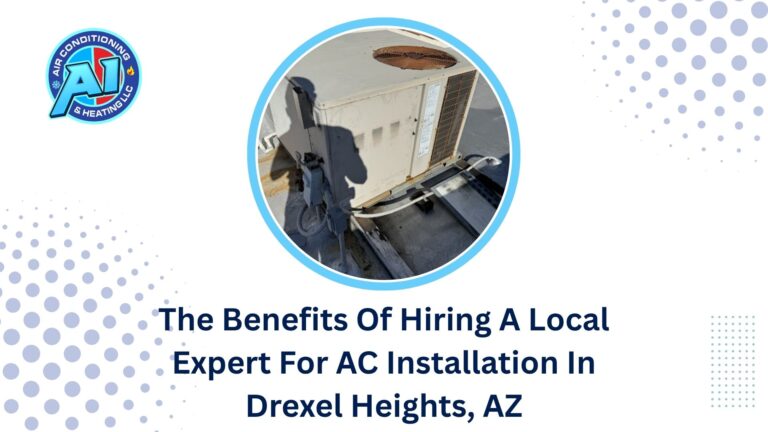Most homeowners find that preparing their home for a new air conditioning installation is necessary for ensuring efficiency and longevity of the system. You should clear the area around the existing unit and provide easy access for technicians. Check for structural integrity in your home where the unit will be placed, and ensure all electrical components are up to code. Proper preparation not only enhances the installation process but also maximizes the performance of your new AC, helping you stay cool in the Drexel Heights heat.
Key Takeaways:
- Assess your current HVAC system to determine necessary upgrades and compatibility with the new AC unit.
- Clear the installation area of any debris and ensure proper access for technicians.
- Evaluate insulation and ductwork for efficiency, addressing any issues prior to installation.
Assessing Your Current HVAC System
Before installing a new AC unit, you must assess your current HVAC system to understand its performance and determine necessary upgrades. Check the age of your system, which can affect energy efficiency and reliability. If your existing unit is over 10 years old, it might be time for a replacement. Also, assess the system’s maintenance history and service records for any recurring issues that could indicate underlying problems.
Evaluating Energy Efficiency
Your current HVAC system’s energy efficiency plays a significant role in your home’s comfort and utility costs. Look for the SEER rating, which measures a unit’s cooling output relative to its energy consumption. A SEER rating of 14 or higher is considered efficient, while older systems may have ratings as low as 6. Upgrading to a higher-rated unit can substantially reduce your energy bills.
Identifying Existing Issues
Take time to identify existing issues in your HVAC system that could impact the installation of your new AC unit. Look for signs of wear and tear, such as unusual noises, poor air circulation, and significant temperature fluctuations. These issues can result from inadequate maintenance, duct leaks, or even poor insulation. Addressing these concerns before installation will not only improve the longevity of your new AC but also enhance the overall comfort of your home.
If you notice a musty odor or excessive humidity, these could signal mold growth in your ductwork, requiring an inspection and possibly remediation before installing your new unit. Additionally, ensure that your ductwork is adequately sealed and insulated, as leaks can lead to substantial energy loss, undermining the efficiency of a new system. You may want to schedule a professional evaluation to pinpoint all potential issues, ensuring a smooth and efficient installation process.
Choosing the Right AC Unit
Selecting the appropriate AC unit for your home involves considering factors like efficiency, cost, and size. You’ll want to weigh the benefits of different types of systems to ensure you invest in one that best meets your needs. Researching models that fit the specifications of your home can help you save on energy bills long-term.
Understanding Different Types of AC Systems
Familiarize yourself with various AC systems, from central air conditioning to ductless mini-splits. Each type has unique advantages and fitting considerations. Selecting the right system can significantly enhance your home’s comfort and energy efficiency.
- Central Air Conditioning: Effective for large homes.
- Ductless Mini-Split Systems: Flexible installation and zoning options.
- Window Units: Budget-friendly for single rooms.
- Portable ACs: Versatile with easy mobility.
- Evaporative Coolers: Best for dry climates.
Thou should evaluate each option based on your home’s requirements.
| Type | Benefits |
| Central AC | Comprehensive cooling for entire home |
| Ductless Mini-Split | Energy-efficient and customizable |
| Window Units | Affordable and easy to install |
| Portable AC | Ideal for temporary cooling |
Sizing Your New Unit
Properly sizing your new AC unit is necessary to ensure efficient cooling. An undersized unit can struggle to cool your home, leading to increased energy costs, while an oversized unit may cool too quickly without adequately removing humidity.
To determine the right size, consider factors such as your home’s square footage, layout, and insulation. A good rule of thumb is to aim for around 20 British Thermal Units (BTUs) per square foot. For example, a 1,500 square foot home would require approximately 30,000 BTUs. Additionally, consider variables such as window placement, shade, and the number of occupants. Consulting with a professional can provide tailored sizing recommendations for optimized performance.
Preparing Your Home for Installation
Taking the right steps to prepare your home for an AC installation can significantly impact the efficiency and effectiveness of your new system. Start by ensuring the installation area is accessible and free of obstacles to allow technicians to work safely and efficiently. This preparation also includes reviewing your home’s electrical setup to ensure it can support the new unit. Paying attention to these details can help streamline the installation process and enhance your air conditioning system’s performance.
Clearing the Installation Area
To facilitate a smooth AC installation, clear the designated area around the indoor and outdoor units of any furniture, debris, or landscaping. This space should be at least two feet wide, allowing technicians enough room to maneuver and perform their tasks without hindrance. Remove any personal belongings or decorative items to prevent damage and ensure safety during the installation.
Ensuring Proper Electrical Requirements
Your new air conditioning system will need ample electrical support to function correctly. Verify that your home’s electrical system meets the specific voltage and amperage requirements outlined by the manufacturer. This step may involve checking the circuit breaker and existing wiring to ensure they are adequate and up to code.
For most central air conditioning units, a dedicated circuit with a proper amperage rating is crucial. Typically, this means having a 240-volt circuit, which may require upgrading your current setup if it doesn’t meet the necessary standards. An electrician can assess your system and make recommendations or upgrades as needed. Failure to provide proper electrical support may lead to operational issues or void your warranty, so it’s vital to address this aspect early in the preparation process.
Budgeting for an AC Installation
Planning your budget for a new AC installation can make a significant difference in the overall experience. Establishing a clear understanding of your financial boundaries allows you to explore suitable options without overspending. Aim for a budget that includes not only the equipment cost but also installation fees and any other related expenses that may arise.
Estimating Costs
To begin estimating costs for your new AC unit, research the price range of various systems. A typical central air conditioning system can cost between $3,500 and $7,500, including installation. When evaluating models, consider factors like the system’s energy efficiency rating, which can impact long-term utility costs.
Considering Additional Expenses
Besides the main installation cost, there are additional expenses that you need to factor in. This might include permits, new ductwork, or electrical upgrades, which can vary based on your home’s specifications.
For instance, if your existing ductwork is old or inefficient, you might need to invest in new ducts, costing anywhere from $1,000 to $5,000 depending on the extent of work needed. Additionally, obtaining necessary permits can incur fees ranging from $50 to several hundred dollars, depending on local regulations. It’s wise to consult a professional to create a thorough budget that encompasses these potential costs, ensuring a smoother installation process without financial surprises.
Hiring a Professional Installer
Hiring a professional installer is vital for ensuring your new AC system operates efficiently and effectively. An experienced technician not only ensures proper installation but also provides valuable insights on maintaining your system. Look for licensed contractors who are knowledgeable about local regulations and can offer post-installation support. By choosing the right expert, you enhance the longevity and performance of your AC unit.
Researching Qualified Contractors
When researching qualified contractors, focus on those who specialize in AC installations and have proven track records in your area. Evaluate their credentials, including licenses, certifications, and insurance. Seek referrals from friends or family, and leverage online resources to compile a list of potential installers. This proactive approach will lead you to qualified professionals who can meet your specific needs.
Checking References and Reviews
Prioritize checking references and online reviews when narrowing down your list of potential installers. Look for consistent positive feedback from previous customers that highlights their quality of work and reliability. Utilize platforms like Google, Yelp, or Angie’s List to gauge the experiences of others. A contractor with a solid reputation is more likely to deliver a satisfactory installation.
In addition to online reviews, directly contacting references can provide valuable insights. Ask past clients about their experiences, focusing on key aspects such as punctuality, professionalism, and workmanship. Inquire if the installation met their expectations and if they encountered any post-installation issues. This interaction helps you assess a contractor’s reliability and gives you peace of mind that you’ve chosen the right installer for your new AC system.
After Installation Care
Proper care after your new AC installation is important for maximizing efficiency and longevity. Immediately following the installation, ensure the unit is functioning correctly by checking settings, listening for unusual noises, and confirming airflow. Regular maintenance not only keeps the system running smoothly but also helps prevent costly repairs in the long run.
Maintenance Tips
To maintain your new AC unit effectively, consider the following maintenance tips:
- Clean or replace air filters every 1-3 months.
- Keep outdoor units free of debris and foliage.
- Schedule annual professional inspections.
- Monitor refrigerant levels.
- Check ducts for leaks.
Recognizing the importance of regular upkeep can significantly extend the lifespan of your system.
Monitoring System Performance
Monitoring the performance of your new AC system is vital for optimal efficiency. Pay attention to any changes in cooling or heating capabilities, unusual sounds, or increased energy bills. Utilize smart thermostats that can provide performance data and alerts, allowing you to identify potential issues early.
Documenting your AC’s performance throughout its operation can help you pinpoint trends and issues before they escalate. For instance, if you notice a sudden increase in energy consumption, it may indicate a need for maintenance or repairs. Keeping a record of your AC’s performance, along with regular professional check-ups, ensures you address minor problems promptly, preventing expensive breakdowns and ensuring efficient operation.
Final Words
Getting your Drexel Heights home ready for a new air conditioning installation is one of the best ways to ensure long-term comfort, energy efficiency, and reliable system performance. By taking the time to assess your current HVAC system, clear the installation area, and verify your home’s electrical and structural readiness, you make the installation process faster, safer, and more effective.
Choosing the right-sized unit and hiring a qualified, licensed installer are equally important steps that guarantee your new AC runs efficiently from day one. Once installed, regular maintenance—such as cleaning filters, checking ducts, and scheduling annual inspections—will help your system perform at its best for years to come.
At A1 Air Conditioning & Heating LLC, we’re dedicated to helping Drexel Heights homeowners enjoy cool, comfortable living all summer long. Whether you need expert guidance in choosing the right unit or professional installation you can trust, our HVAC Contractor team in Drexel Heights is here to ensure your new AC system delivers maximum comfort and value.
Stay cool, stay efficient — and let A1 Air Conditioning & Heating make your installation experience seamless from start to finish.
FAQ
Q: What steps should I take to prepare my home for a new AC installation?
A: Start by clearing the area around the current air conditioning unit. Remove any obstacles, such as furniture, plants, or debris, to provide easy access for the installation team. Ensure that the space is well-lit and that your driveway is clear for the installation vehicle.
Q: Do I need to be home during the AC installation process?
A: It is recommended to be present during the installation for any questions or decisions that may arise. However, if you cannot be home, ensure that your installer has access to the property and any necessary details to complete the work efficiently.
Q: What should I do with my pets during the installation?
A: It’s best to keep pets indoors but away from the installation area. This helps ensure their safety and prevents distractions for the installation team. Consider placing them in a separate room or with a neighbor until the work is complete.




